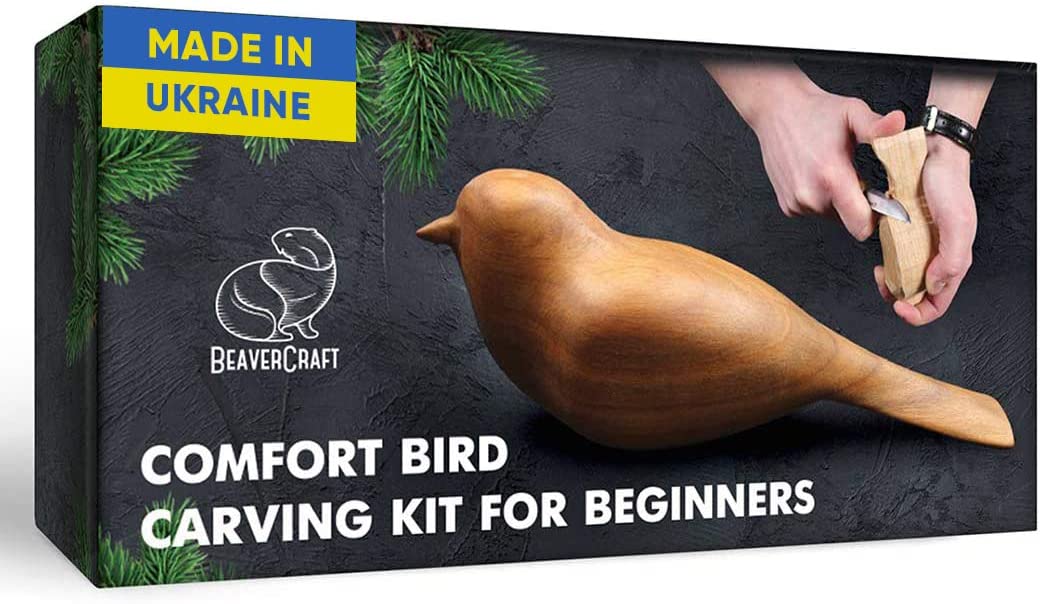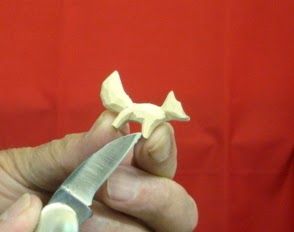
Whittling Twigs & Branches from Chris Lubkemann is a great whittling guide for beginners and seasoned carvers. The book provides a good introduction into woodworking. It also teaches you how to curl, an important technique that can make beautiful pieces. An experienced woodcarver, the author has been carving wood for many decades. His instructions are clear and simple to follow.
Chris Lubkemann
The fascinating world of whittling was a fascination for many for years. Chris Lubkemann has written five books on the subject and shared his knowledge to readers through his book Whittling Branches and Twigs. The book contains step-by-step instructions as well as pictures that show the final products of his whittling.
Chris Lubkemann’s whittling guidesbook includes 18 projects. They are easy-to-follow and will help you understand the basics. The book also shows you how to safely sharpen your knives, how to choose the best woods for carving, and what tools to use. It is an invaluable resource if you're looking for more inspiration on the craft.
Chris Lubkemann’s whittling twigs, and branches

This video is perfect for anyone who has ever wanted to carve branches or twigs. Chris Lubkemann, a master woodworker, has a new method of witting that creates curls of wood with perfect shapes. His technique is also versatile, allowing him to carve everything from birds to carved pieces. Lubkemann shows his craft at Lancaster County's Amish House and Farm Museum.
This step by step guide will help you create incredible carvings. To make your masterpieces look amazing, all you need is a pocketknife. The book is easy to follow and is suitable for beginning whittlers. The book also teaches you how to carve twigs or branches using a pocketknife.
FAQ
Is it possible to open my own woodworking shop?
It's not easy to start your own woodworking business. There are many laws and regulations you need to be aware of. However, it doesn't necessarily mean you must go through all the hassle of setting up a business. Many people prefer to join existing companies. You only need to pay membership and tax fees.
What is the hourly rate for a woodworker?
Hourly rates for professional woodworkers vary depending on many factors such as skill, experience, availability, geographical location, and other variables.
A skilled woodworker can expect an hourly rate of $20-50.
A less skilled woodworker might charge as low as $10 per hour.
How much money will I need to get started?
Since every project differs, it is impossible to give exact numbers. But if you want to get an idea of how much money you'll need, consider these factors:
-
Material costs
-
Tools and equipment
-
Time spent working on the project
-
Hourly rate
-
How much profit can you anticipate to make
-
It doesn't matter if your goal is to hire help
You might start small if you are just starting out. As you gain experience, more difficult projects will become possible.
How can a beginning woodworker make a living?
Many people are starting to learn how to build furniture because they want to start an online business. But if you're just getting started building furniture, there are other ways to earn money besides selling on Etsy. Sell at craft fairs or other local events. For those who want to build their own furniture, you might offer workshops. If you have the experience to be a carpenter, builder, or a designer, you may consider offering your services in remodeling homes or creating custom pieces.
How much do hobbyists need to invest in starting a business?
To start your own woodworking company, you will likely need capital to purchase the necessary tools and other supplies. You can start by purchasing a small table saw and drill press as well as a circular saw, circular saw, jigsaw and sanding machines. These items don't cost much so they won't break your budget.
Where do you start when it comes to woodworking?
Learning how to build furniture is the best method. You'll need tools, and you'll have to make mistakes along the way, but if you keep at it, you'll eventually figure out what you're doing.
Begin by choosing the project that you want to finish. You could make something as simple or complex as a box. Or you could build a whole entertainment center. Once you have settled on a specific project, it is time to find a woodworker in your area who is experienced in such work. Ask your local woodworker to help you determine the right tools for you and where they are located. You might even ask whether there's someone else you can talk to who does this kind of work.
Statistics
- In 2014, there were just over 237,000 jobs for all woodworkers, with other wood product manufacturing employing 23 percent; wood kitchen cabinets and countertop manufacturing employing 21 percent. (theartcareerproject.com)
- Most woodworkers agree that lumber moisture needs to be under 10% for building furniture. (woodandshop.com)
- Woodworkers on the lower end of that spectrum, the bottom 10% to be exact, make roughly $24,000 a year, while the top 10% makes $108,000. (zippia.com)
- If your lumber isn't as dry as you would like when you purchase it (over 22% in Glen Huey's opinion…probably over 10-15% in my opinion), then it's a good idea to let it acclimate to your workshop for a couple of weeks. (woodandshop.com)
External Links
How To
Tips on how to drive a nail in wood
The first step in driving a nail into wood is to choose the correct size and type of hammer. Claw hammers include mallets, claw hammers (sledgehammers), mallets, ball-peen hammers, hatchets, and mallets. Each kind of hammer has its own advantages and disadvantages. A claw hammer is best for hitting nails or hard objects. However, it can be difficult to pinpoint exactly where the blow will land. A sledgehammer is great for hitting large areas at once, but it's too heavy to use effectively for smaller tasks.
Place your hand flat on the side of your chosen hammer so that the handle rests in your palm. You can grip the handle with your fingers, but not so tight that it causes injury. Keep your wrist relaxed and the hammer straight up. Next, swing the hammer toward the ground and aim for the nail's center. You should feel the impact of your hammer hitting the nail. You can practice swinging the hammer with a block or wood until you feel the rhythm.
You can now drive the nail by holding the hammer to your body. Position the nail, so it's perpendicular to the surface of the wood. Keep your attention on the tip. Swing the hammer forward, and then move the hammerhead. Continue this motion several times, slowly increasing the speed of each swing. Once you have mastered this technique, increase the power of your swings. You can hold the hammer over your shoulder and forcefully bring it down. This will help you put more energy behind each of your moves.
Once you've nailed the first hole, remove the hammer from the nail. The rest of the nails can be pulled out using a screwdriver, pry bar, or a hammer. You should ensure that the nails are flush with the board's surface to avoid splitting the wood.